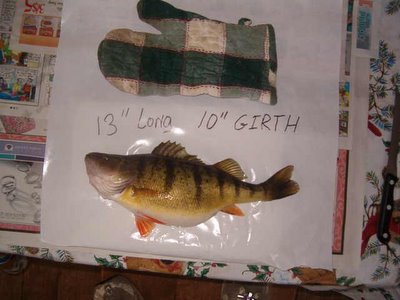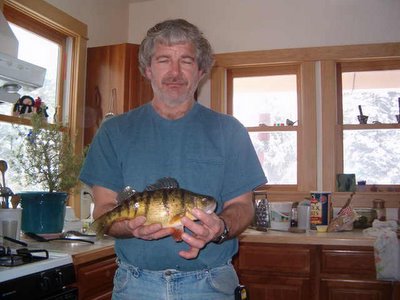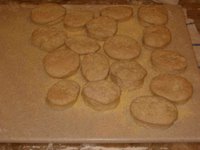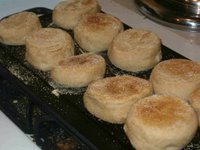It was mute swans that were the sentinels. Reports of dead swans came in rapid succession from first Greece, Italy, Slovenia, Bulgaria. Tests showed that they were positive for H5N1. A few days later they were finding dead swans in Austria, France, and finally Ireland. Dead swans were the first sign, probably because they are more susceptible and because they are easy to spot when the corpses wash ashore. These are mute swans, the same species that live in our lakes and rivers here in Leelanau. Still, it was notable how quickly the disease seemed to spread, even thought it is still early for the big migration season.
Avian flu has also been spreading in both Nigeria and India. Indian authorities have been notably coy about giving the world details about the situation there. In Nigeria, BBC news reports that publicity about the disease has sparked a rush to sell poultry, overwhelming the authorities' feeble attempts to contain the disease.
Today the NY Times reports that a large turkey farm in eastern France has suffered an infection. It is the first time the disease has been found in farm animals in the EU. It was a large farm, housing over 11,000 turkeys. Events have unfolded with blinding speed for this family:
Meanwhile, Daniel Clair, the owner of the turkey farm where the flu was confirmed, told the newspaper Le Parisien that he thought the virus was carried on bales of straw that he had put into his indoor pens after his turkeys had been treated for diarrhea.
A local veterinarian, Claude Lessus, who told Le Figaro that he had prescribed antibiotics for the turkeys, said Mr. Clair collected seven big bales of straw with his tractor, adding, "This could be the means by which the animals became
infected."On Wednesday night, his turkeys were fine, he said. But on Thursday morning, he found 400 dead birds in his flock, and others that were sick. It was, he said, "a thing so thunderous, I immediately understood."
Mr. Clair's remaining turkeys were slaughtered, even before the final determination was announced after 1 a.m. Saturday.
Mr. Clair, his wife and their 8-year-old son are being treated with Tamiflu, an antiviral drug, and have been quarantined in their home. He said he had been told to notify the authorities if they became ill. An 11-year-old daughter, who was not at home when authorities intervened, has not been allowed to return.
A security zone of two miles and a surveillance zone of five miles has been created around the farm, French officials said. The police are disinfecting the farm, where other animals are also raised, as well as the wheels of vehicles that had traveled near the area.
Mr. Clair said that he wanted all necessary precautions to be taken, but he confessed he felt a bit like a pariah. The policeman delivering the flu medicine refused to come up to his house, but left the drug on the road, he said; his mail is not being delivered.
"I have begun to worry," Mr. Clair said. "We have started to run out of food."
It is still frustrating to note how much is not known about this disease. Before now, I have been thinking that we would get some warning that the disease was in the area before it actually hit our barnyards. Poor Mr. Claire's experience was much more sudden.
And the disease is spreading far faster than our understanding of the basic mechanisms of the disease. Yesterday's Effect Measure discussed the lack of a consistent pattern of connectons between the human victims of the disease and the birds. There are too many cases of human victims who had no known contact with birds. And when there is contact, researchers have not been able to find identical viruses in the birds and the people. There is speculation that there may be a connecting vector, another species that carries the virus from bird to humans. (Cats?)
So many questions and not enough research going on. Or the research is being ramped up way late. (This is why it is important, in good times, to keep funding research on seemingly silly questions. You never know when you might suddenly need to know about the migration patterns of ducks or the mutation rates of seemingly benign viruses. And if you have extra people trained and working as researchers, you can easily divert their expertise in an emergency.) We don't know how the virus travels, whether it moves mostly with wild birds or with domestic poultry moved by people. We don't know how it infects people; many people have been exposed to sick birds with no apparent effect, yet some people have gotten sick with no apparent exposure to sick birds. We are sadly lacking in any sort of large scale testing of humans in infection areas to determine how many people carry the antibodies to the disease, indicating that they had an infection with no symptoms.
Ducks seem to be good at carrying the virus without getting sick. I haven't heard any talk of the disease in songbirds, so I guess the bird feeders are still OK. Will we be worried about swimming in the lake with the ducks this summer, or about letting the kids chase seagulls on the beach?
I have chickens die from time to time. One will start to look peaked, standing in one place with her head scrunched down in her shoulder, staring off at nothing. A few mornings later I go out to the barn and find her dead. I used to try to nurse sick ones, but it generally isn't worth the trouble. I have never had birds die as fast as Mr. Claire's turkeys, and never more than one at a time.
The thought of having my family quarantined because of the chickens puts a new spin on things. I now have 15 chickens, including the nasty rooster and Harry Houdini. The hens are over two years old and are past their egg laying prime. I put off slaughtering the whole flock last fall, in part because I feared that the avian flu might make it hard to get replacement birds. (I also had no room in the freezer.) As I watched events unfold I plotted ways to get the flock out of the barn this spring and into a coop that I could more easily sterilize or even burn down if needed. Now I'm thinking I will slaughter them all after the spring egg season, or sooner if we start finding infected dead swans in the US.
Read the next avian flu post here.





